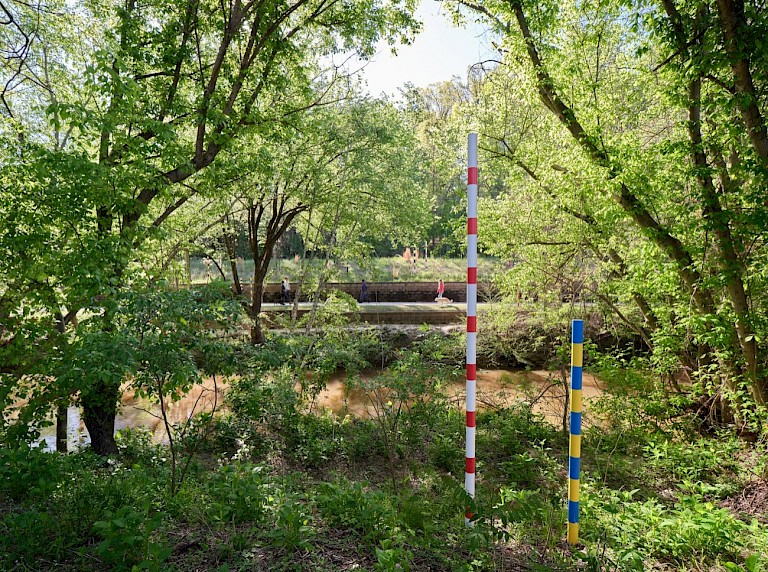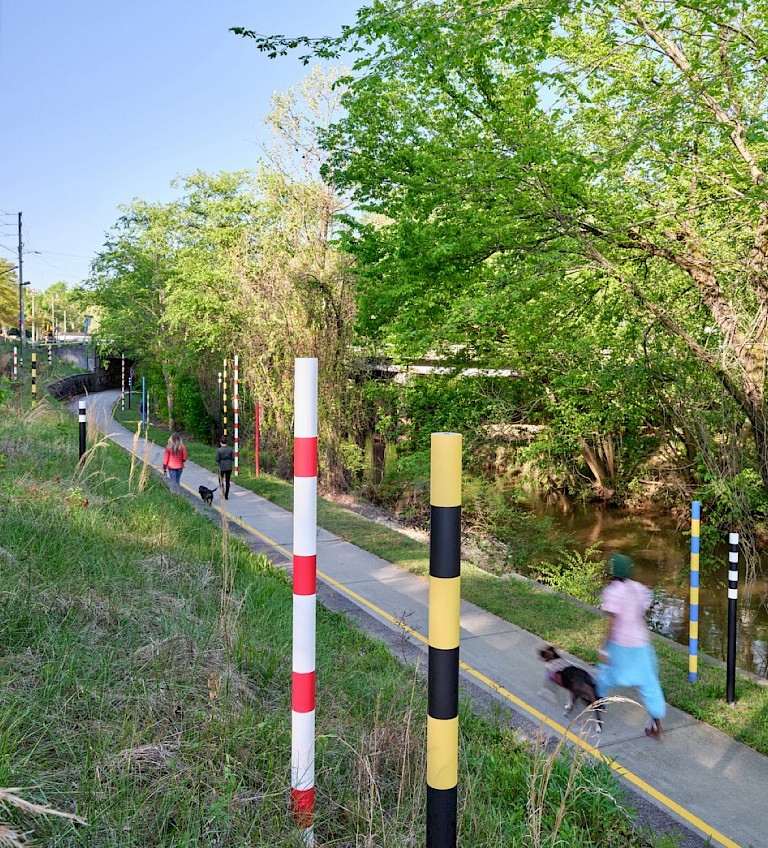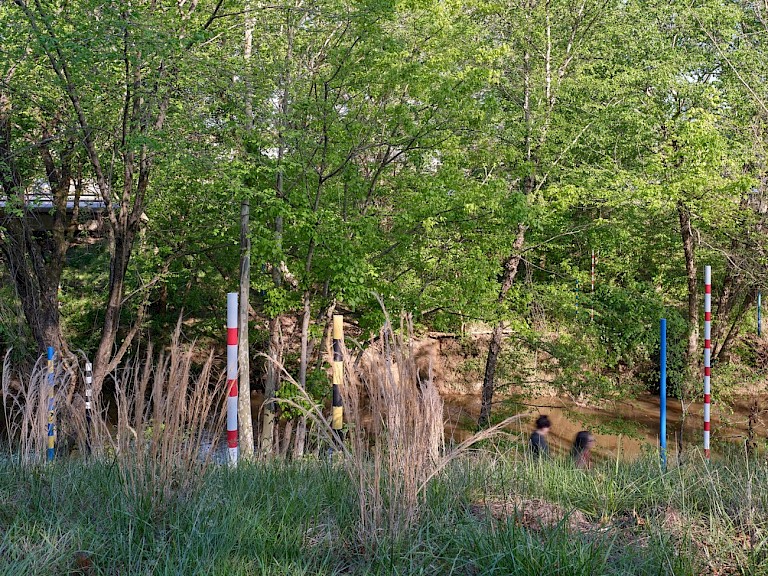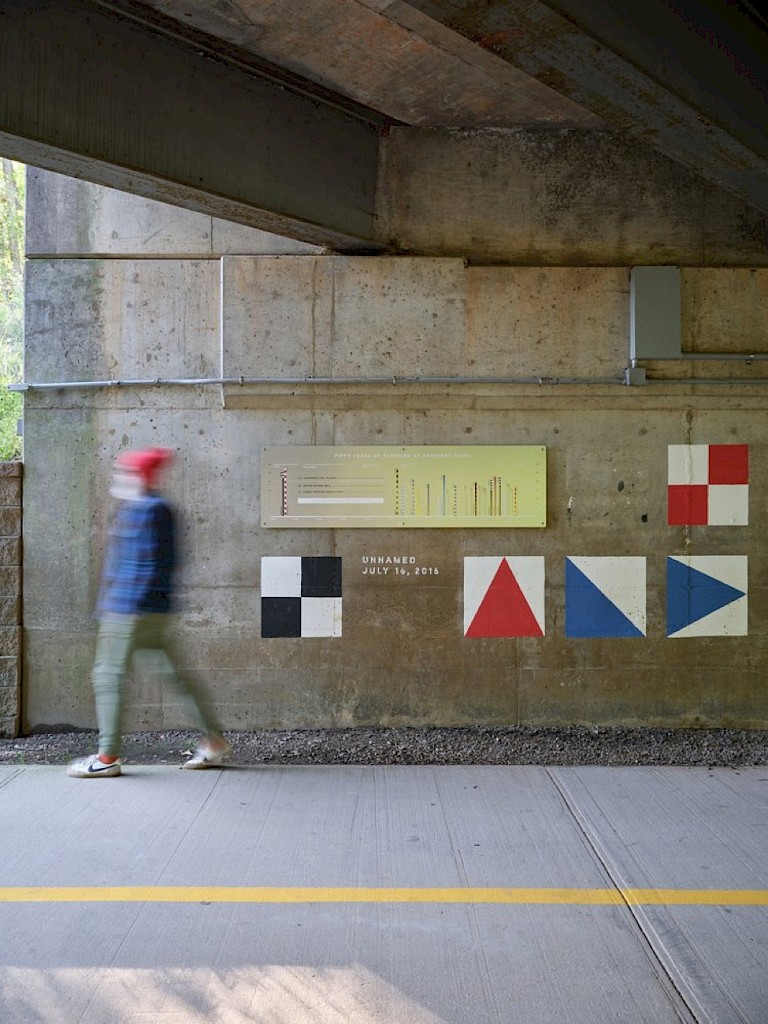



The original public project RFQ (funded by the City of Raleigh Stormwater department) called for a floodplain/flooding “educational” display along Raleigh, NC’s Crabtree Creek greenway trail. The work was required to be permanent, with minimal needed maintenance, and able to resist the impacts of flooding. The rest was completely open ended. The site itself was nearly two acres, and the budget was minimal ($35K originally, $50K after the city decided to expand the scope). Considering that two of our three partners are from Raleigh and were deeply familiar with the area and the site’s severe flooding issues as well as their resulting tragedies (one of William’s friends sadly drowned in the Crabtree Creek floodwaters resulting from Hurricane Fran in 1996 and both Lincoln and William knew people who had been permanently displaced due to the constant flooding issues), we were ideally suited to pursue the project. The selection was done through the use of a remote Zoom interview in November of 2020. The panel consisted of various citizens, stormwater experts, and City of Raleigh personnel. Ultimately we were chosen due to our knowledge of the site and our initial ideas to maximize the scale and visual impact, while also improving both resiliency and biodiversity, and our ability to openly embrace the inevitable flooding as a key part of the project itself, all on an extremely limited budget (as compared to its size).
"Alluvial Decoder is an excellent example of how public art can be created to educate and invite conversation surrounding critical issues. Investing in artists to create a visual storytelling experience is one of the best ways cities can communicate a message and meaningfully engage our communities. The impact of an immersive experience in particular is much greater than simply printing a sign or telling a story. As an artwork, Alluvial Decoder was designed with careful attention to concept, aesthetics, and the history surrounding the site - all while being executed on an extraordinarily tight budget and with significant site constraints."" Kelly McChesney, Public Art Director, Raleigh Arts
“Through the Alluvial Decoder project, the artists have invited the curious to seek an understanding of Raleigh’s flooding history, and through this journey participate in conversations surrounding the environmental and public safety benefits of critical issues such as floodplain management and ecologically sensitive development.” Wayne Miles, Raleigh Stormwater
“Alluvial Decoder elegantly educates participants about the city of Raleigh’s floodplain while also providing a visceral understanding of the flood heights of various storms in a thoughtful, tactile and artful way. The installation is not only a beautiful piece of public art, it is also deeply educational and allows viewers to walk away with a much greater understanding of the impact of storms and development upon our watershed.” Jenn Hales, Public Art Curator, Raleigh Arts, Jenn Hales
A Gang of Three is an award-winning multidisciplinary public art and planning practice based in the United States.With a shared ethos and desire to better humanity through art and design, we focus on research-based, community-engaged, site-specific placemaking and public art projects that embrace their own unique living history through landscape, planning, mixed media, and performance. Often taking a curatorial approach, we are ever mindful of both the human experience and the true power of dynamic and intentional public space.Ultimately, we seek to create meaningful experiences, not objects.www.agangofthree.com



